MARKET OVERVIEW
The Global Dried Mango market and its set of industries will see a gradual drift away from old demand and trade traditions into spheres created by subtle consumer behavior, advancing policies, and technological intervention. Generally defined by exports and snacking, the possible future of dried mango far overshoots the already thinly defined present-day market, creating complexities around which the very identity of the trade will be charted in a decade or so from today.
An important shift will be in the direction of including dried mangoes in applications and product categories never considered before. Instead of stand-alone snacks or baking ingredients, dried mangoes will find their incorporation into functional foods, wellness supplements, and even nutraceuticals. Players across the Global Dried Mango market will find themselves catering to research-led formulations specifically aimed at health benefits, such as digestive balance or restoration of energy. In this manner, scientific research will drive product development with a market focus on formulations that speak not so much on flavor but about bioactive compounds that are preserved during the drying process.
Another layer for redefinition of the market emanates from notable agricultural policies on a regional level that also interlink with climate change responses. Sourcing dried mango will no longer depend entirely on traditional pie timing and marketing. Changing weather patterns or evolving agricultural policy will open new corridors for sourcing. Countries that were previously considered marginal in mango production will now come forward with demand options. This would not only change the course of trade but would also encourage valorization of local chains with their own drying practices and flavor. Lent profiles, thereby adding yet another layer of diverse coordination to what is out there on a global scale. As the Global Dried Mango market progresses, it will hash out various regulatory changes, information on which will now encompass something related to carbon emissions tracking and the accountability of traders regarding good trade practice.
Technology will also be making its influence felt deep down the value chain. The drying of mangoes, which, until now, has been reliant on manual labor with simple techniques, will give way to the infusion of AI and precision agriculture. These AI and precision agriculture technologies will be used for yield prediction, climatic control, and shelf-life improvement. Gradually, blockchain technology will be used for traceability and building consumer trust with globally transparent sourcing stories. This consumer interest will be driven mainly by retail buyers and B2B channels, demanding that such proof of accountability is no longer considered a marketing opportunity but rather an accountability baseline.
With global culinary cultures meshing, flavor expectations associated with dried mango would no longer be limited to sweetness and chewiness. Chefs and product developers separated by continents will seek regional flavor authenticity, specific textural elements, and even bespoke acidity balances. This ever-evolving demand will empower the industry to invest in micro-batch production lines and sensory-based quality controls.
Global Dried Mango market is estimated to reach $1,448.70 Million by 2032; growing at a CAGR of 6.2% from 2025 to 2032.
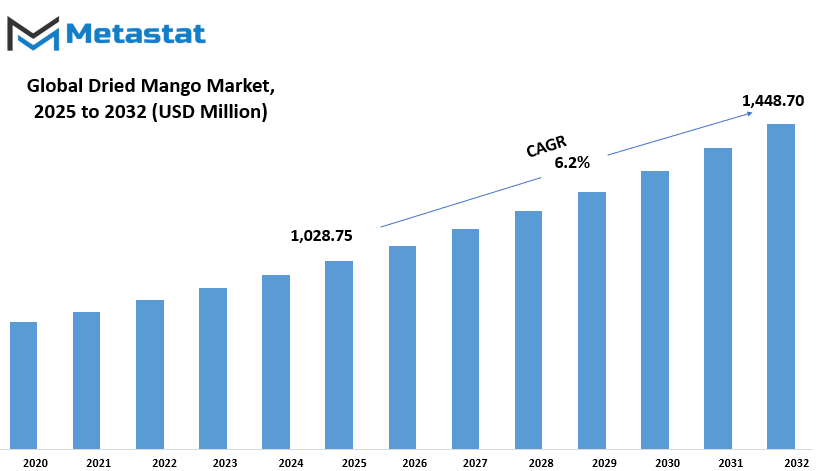
GROWTH FACTORS
An ever-growing need for healthy snacking alternatives has kept the global dried mango market on its feet. An increasing number of health-conscious people are opting for dried fruits like mangoes as a healthy snacking alternative since it offers natural sweetness, portability, and essential nutrients. Mangoes are thought to offer some prospective important nutrients like fiber and vitamins and antioxidants. Therefore, these lead to them being attractive to the consumers looking for healthy snacks. Moreover, increasing awareness about the health benefits from consuming dried mango has also fueled the demand towards this product and been established as phenomenal progress in terms of acceptance within an increasingly health-conscious consumer base.
True, this market is booming, but it will also undergo some very real challenges as the dried mango industry develops. One of the main problems is seasonality in the supply of mangoes. The supply level and price will vary according to the harvest quality and quantity that changes throughout the year. Thus, market pricing will not be stable, and this will affect both producers and retailers. It may bite the profitability of the entire market when supplies are low, and prices are high therefore making it cumbersome for different stakeholders dealing with the industry in dried mango production.
Also, the problem is the processing and preservation of dried mango. While processing, the quality loss of the product must be avoided, moisture has to be controlled, the spoiled product has to be safeguarded. It is the condition to provide a satisfactory product to the consumer. It requires huge investment in the specialized equipment and technologies to maintain the freshness of the product and elongate its shelf life. To meet these investments, the producer may continuously not have the ability to provide quality-dried mango to the market.
Nevertheless, there are very great opportunities that can be tapped into expansion by the dehydrated mango market. More distribution channels and creative marketing tactics to target additional consumer segments and new geographic markets can help create demand for dehydrated mangoes. Dehydrated mango will tend to become a more versatile ingredient for strengthening potential uses and culinary applications. It seems that dehydrated mango may gain its popularity further owing to its capability of being included in recipes and in preparation. This means its consumer market attractiveness could widen even further. Thus, as snacking and meals in dried mango increase in applications growing, further economic prospects open up for the future of this market, bringing even more opportunity in the investment category to new business ventures.
MARKET SEGMENTATION
By Type
In the last couple of years, the global dried mango market has witnessed a terrific surge. This is due to numerous factors such as increasing health consciousness, rising demand for natural snacks, and a growing interest in the global market for snack food. Thus, for these people who are looking for these healthy snacking types, appreciation of dried mango has come with natural sweetness, portability, and long shelf life. In fact, the dried mango industry has two major segments according to product type, namely, natural mango dried and sugar-added dried mangoes.
Natural dried mangoes hold a huge share of the market, which is valued at 604.7 million dollars. Preference by these consumers is those who look for healthier products of the sugarless kind. Basically, when the dried mango-making process is characterized by the absence of preservatives or artificial sweetening, it is termed natural dried mango. As if this could not get better, it is also an excellent source of vitamins A and C and of dietary fiber. Thus, it is alluring for health-conscious consumers. Many consumers longing for natural and wholesome products have turned to earthy flavors from natural dried mango because they do not have added sugars or preservatives.
Sugar-added dried mangoes are hotels for a huge portion of consumers who would prefer to consume something sweeter in their snacks. This will usually be the added sugar to dried mangoes during the cases when the fruit is laid out-this adds sweetness because the fruit is dehydrated. These sugar-added dried mangoes provide excellent snacks, and for people longing for something sweet, it can be a preferred alternative to natural dried mango. However, some health-conscious consumers may opt for natural mango for being a healthier choice because sugar-added mangoes have added calories and sugar.
Both types of dried mangoes continue to grow in terms of preference across regions. Natural dried mangoes are projected to steadily grow as health snacks attract more consumer attention while sugar-added dried mangoes shall remain amply present in the market on account of sweetness appeal. Given that each product caters to distinct consumer taste and preferences, there will be an even greater outlook on the dried mango market as more people pursue healthy and convenient snack alternatives.
In summary, the global dried mango market is fostered by increasing demand for natural dried mangoes and sugar-added versions alike. Future developments will hinge on myriad consumer mood switches-in the event where sugar-added dried mango appears to hold great interest among sweet lovers-naturally dried varieties will gain further ground with health-conscious customers.
By Application
The very reason that dried mango is extensively demanded across the different industries, in numerous applications, remains the same competition within the market for global dried mangoes. One such stronghold in the dried-mango-consuming industry is breakfast cereals. Dried mango is used in breakfast cereals as a convenient and nutritious sweetener or an added source of fiber and vitamins as many of them today seek healthy alternatives to traditional sweeteners. The presence of dried mango enhances flavor and texture for these products to constitute a healthy dietary replacement of the other sugary ingredients.
Dried mangoes are extensively used as snacks and energy bars. With the hastening pulse of healthiness among people, they will be requiring more and more healthy and easy to carry snacks. Dried mango would suit perfectly in these bars since the snack is healthy and very rich in vitamins A and C, potassium, and fiber, thereby making it an ideal ingredient for energy bars that seek to offer health benefits and natural energy to consumers.
But dividends are not limited to this; dried mango has provided enormous dividends in the baked goods manufacturing business because dried mango can be an ingredient in many types of baked products like breads, muffins, cakes, and cookies. Sweetness and chewy texture have added nutritional value to many recipes, making them more nutritious and also healthier. Not only does it provide a lot of nutritional benefits but also creates a healthier alternative than other high-sugar ingredients in bakery items.
That's not what all dried mangoes can do; dried mango has a greater application than these broad categories and includes sauces, smoothie products, and toppings for salads or yogurts. Dried mango's versatility in many culinary applications keeps adding stars to its popularity day-by-day. Further, as consumers shift to more natural health options, demand for dried mango is likely to receive a climb that never will have an unprecedented rise in its forms-both as dried mango and various applications.
It all-in-all turns into the market for dried mangoes worldwide where all cravings for this nutritious and tasty ingredient satisfy several applications and industries. As countries develop more public awareness about healthy eating, the consumption of dried mangoes should increase within this market as it is driven by the applications that are versatile and, moreover, due to the growing demand by consumers toward natural nutrient-rich foods.
|
Forecast Period |
2025-2032 |
|
Market Size in 2025 |
$1028.75 million |
|
Market Size by 2032 |
$1448.70 Million |
|
Growth Rate from 2025 to 2032 |
6.2% |
|
Base Year |
2024 |
|
Regions Covered |
North America, Europe, Asia-Pacific, South America, Middle East & Africa |
REGIONAL ANALYSIS
The global dried mango market is segmented into regions: North America, Europe, Asia-Pacific, South America, and the Middle East & Africa. Each of these regions has its own market personalities with demand patterns influencing markets.
The three defined North American countries are the US, Canada, and Mexico. Each contributes in varying degrees owing to several consumer preferences and purchasing power. The United States exhibits high demand for dried fruits, particularly as snacks; Canada and Mexico may have different areas contributing to demand owing to their preference for local foods.
Another ripe market for dried mangoes is Europe itself, and the region is carved into several countries-the UK, Germany, French, Italy, and Rest of Europe. Dried mangoes are recently proving quite popular in Europe among health-conscious snack foods and cooking ingredients. Quick and the biggest consumers are the UK and Germany, whereas Rest of Europe countries significantly influence market trends, too.
The Asia-Pacific region consists of important countries: India, China, Japan, and South Korea and the rest of Asia-Pacific. Being one of the major mango-producing regions, Asia Pacific has solidified its market of dried mango products. In India and China, dried mangoes are consumed mostly as snacks and in many traditional culinary applications. Meanwhile, in Japan and South Korea, the demand for dried fruits is being nurtured by the mushrooming health food trend.
Brazil, Argentina, and the other South American countries constitute the other section of the South American market. The largest consumption of dried mangoes is in Brazil, given the extremely large population there with a very strong agricultural foothold. In Argentina and other countries of South America, dried mangoes are slowly but surely getting accepted, especially by the health-conscious who favor nutritious, easy-to-carry snacks.
The Middle East & Africa regions are classified into a group of geographic segments consisting of the Gulf Cooperation Council (GCC) countries, Egypt, South Africa, and the rest of the Middle East and Africa. The Middle East has enjoyed a great share of demand for dried fruit, mainly as snacks and in traditional meals. The overall pattern is experiencing dried mangoes in the GCC because of their demand for anything simple to store and transport. Another strong contributor to this market is South Africa, with increasing demand for dried fruits on local and export markets. Thus, demand patterns and preferences in each of the regions create opportunities and challenges that may be peculiar to various sections of the globe under consideration.
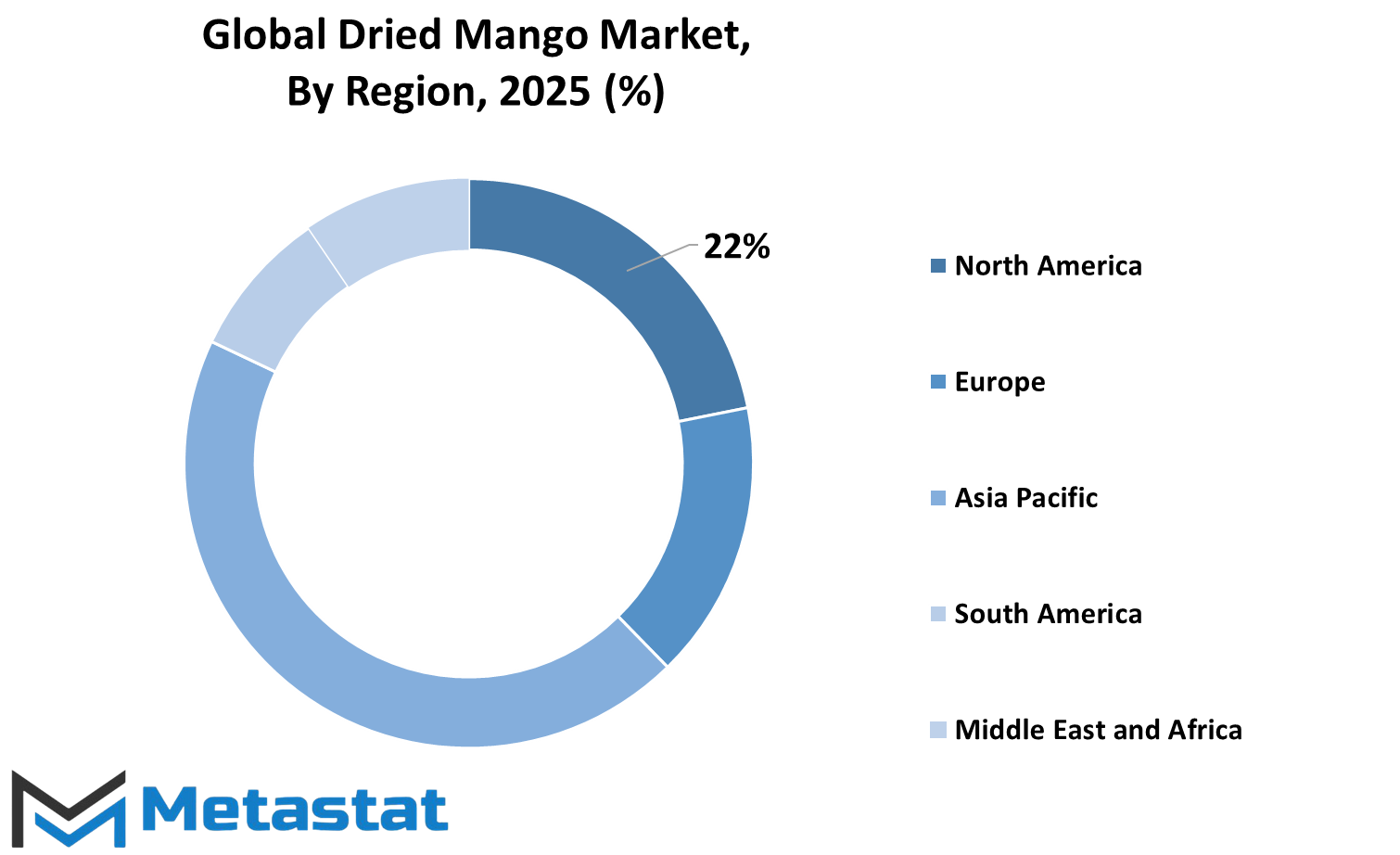
COMPETITIVE PLAYERS
The global dried mango market occupies a significant space in the dried fruit industry, and there are numerous players who contribute globally to the segment's growth and development. The main players in the dried mango industry include Agrosyn Impex; Besana; Horizon Foods Ltd; Westfalia Fruit Products; Seeberger; Gebana Afrique; Biofruisec; Daco France SA; Tradin Organic Agriculture B.V.; Kluth; BESTORE; Haoxiangni; Three Squirrels; Natierra; Peeled Snacks; Made in Nature; 7D; WEL-B; and Sunsweet Growers. The involvement of these companies is paramount to the industry, providing a market-aligned large variety of dried mango products to meet the needs of both domestic and export markets.
This dried mango supply and distribution leader is Agrosyn Impex, Besana, and Horizon Foods Ltd. These companies obtain a market for themselves through sustainably sourced practices and the highest standards of fruit quality. The other group of big market players are Westfalia Fruit Products and Seeberger, which have aggressively sold their products to an expanding customer base with the help of their efficient distribution networks. Both companies trade conventional and organic varieties of dried mango, thus offering an option for varied consumer choices.
Some other important players include Gebana Afrique and Biofruisec, promoting the dyestuff of dried mango with interests in environmental conservation and fair-trade support systems. Their resolution in sustainable agriculture and social responsibility has gathered them a loyal customer base. Daco France SA and Tradin Organic Agriculture B.V. have also gained notoriety for their organic dried mango product line directed at health-conscious consumers seeking natural snacks. Companies such as Kluth, BESTORE, and Haoxiangni have then diversified product lines with dried mango in an assortment of forms-slices, chunks, and powder, across several segments of the industry. Three Squirrels and Natierra have taken advantage of the health-snacking trend, marketing convenient and nutritional dried mango products. Organic dried mango snacks by Peeled Snacks and Made in Nature meet the demand for clean, simple ingredients.
The competition within the international dried mango business is fierce due to the presence of players such as 7D, WEL-B, and Sunsweet Growers. These players are deeply involved in product innovations, satisfying customer demands as they come about, assuring that the dried mango will remain a popular and nutritious snack option for people around the globe. The rising demand for healthy snacks sustains the industry along with the increasing striving for organic and sustainable foods.
Dried Mango Market Key Segments:
By Type
- Natural Dried Mango
- Sugar Added Dried Mango
By Application
- Breakfast Cereals
- Snack Bars or Energy Bars
- Bakery Products
- Other
Key Global Dried Mango Industry Players
- Agrosyn Impex
- Besana
- Horizon Foods Ltd
- Westfalia Fruit Products
- Seeberger
- Gebana Afrique
- Biofruisec
- Daco France SA
- Tradin Organic Agriculture B.V.
- Kluth
- BESTORE
- Haoxiangni
- Three Squirrels
- Natierra
- Peeled Snacks
- Made in Nature
- 7D
- WEL-B
- Sunsweet Growers
WHAT REPORT PROVIDES
- Full in-depth analysis of the parent Industry
- Important changes in market and its dynamics
- Segmentation details of the market
- Former, on-going, and projected market analysis in terms of volume and value
- Assessment of niche industry developments
- Market share analysis
- Key strategies of major players
- Emerging segments and regional growth potential



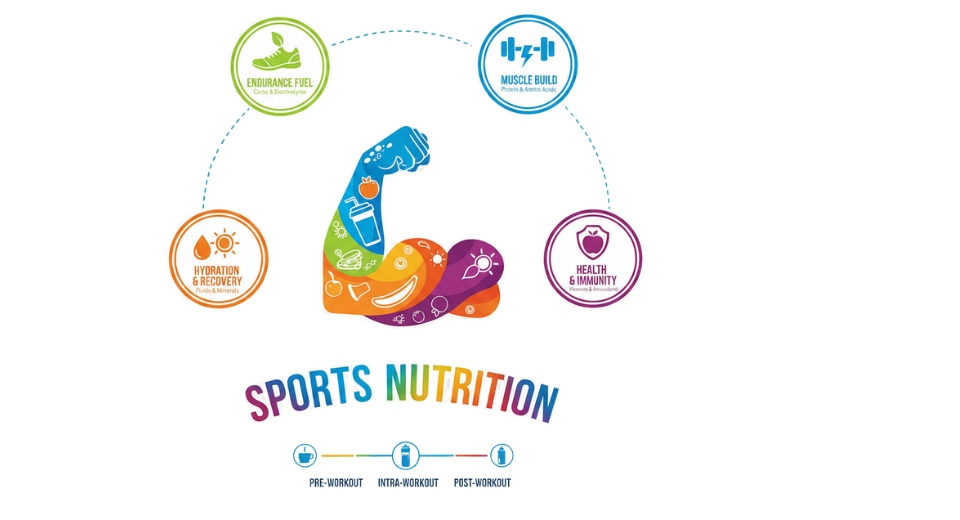
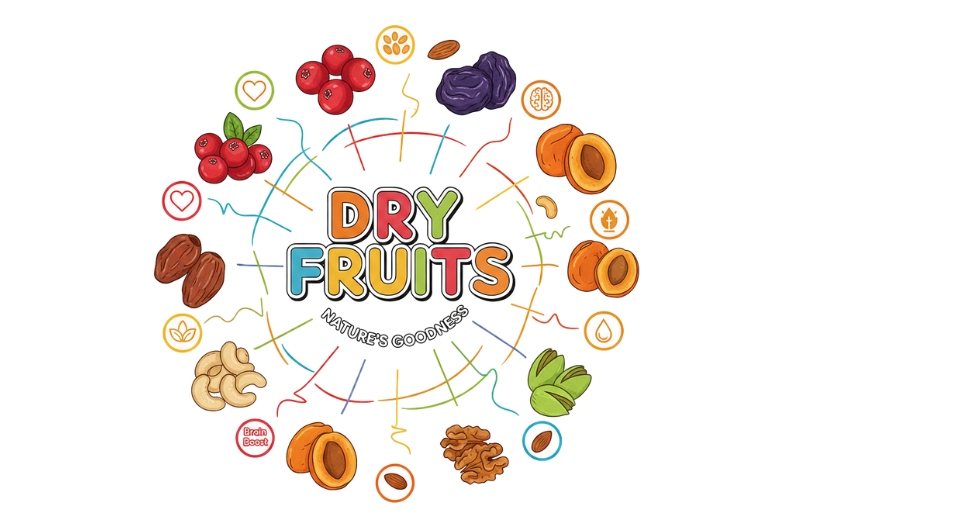

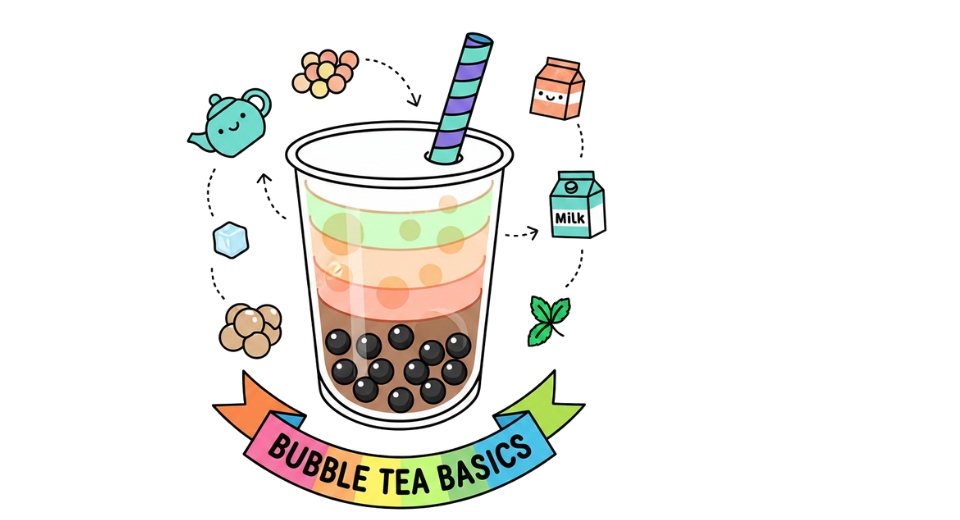

 US: +1 3023308252
US: +1 3023308252






